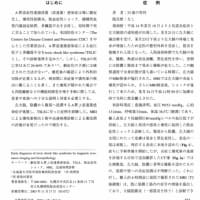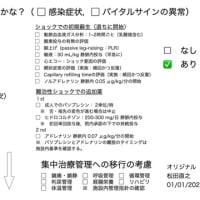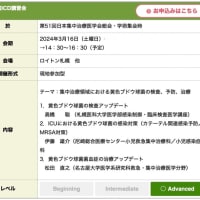Inflammatory Muscle Diseases.
Dalakas MC.
N Engl J Med. 2015 Apr 30;372(18):1734-1747.
<松田直之 コメント>
全身性炎症では筋力低下が生じますが,救急・集中治療医は,その分子機構をより深く理解して,創薬を講じる必要があります。読み応えのある応用性のある総説です。当教室のみなの必須・必読論文です。しかし,このシェーマは熟成されておらず,この分子関連のたくさんの脱落がを改良することが重要です。
Inflammatory myopathies are the largest group of potentially treatable myopathies in children and adults. They constitute a heterogeneous group of disorders that are best classified, on the basis of distinct clinicopatho- logic features, in four subtypes: dermatomyositis, polymyositis, necrotizing auto- immune myositis, and inclusion-body myositis (throughout this review, I use this term to refer specifically to sporadic inclusion-body myositis).1-6 A fifth subtype, termed overlap myositis, is also beginning to be recognized. The identification of the correct subtype and the distinction of these conditions from other diseases that have characteristics that mimic these conditions is fundamental, because each subtype has a different prognosis and response to therapies. This review reflects the current knowledge of these conditions, highlights how best to avoid erroneous diagnoses, describes the main clinicopathologic and immunologic features, and pro- vides practical guidelines regarding therapies.

Patients with inflammatory myopathies have increasing difficulty with tasks re- quiring the use of proximal muscles, such as getting up from a chair, climbing steps, or lifting objects.Tasks requiring distal muscles, such as buttoning or holding objects, are affected early in inclusion-body myositis but only in advanced cases of polymyositis, dermatomyositis, and necrotizing autoimmune myositis. The ocular muscles are spared in all subtypes, but facial muscles are commonly affected in inclusion-body myositis.3 In all disease subtypes, neck-extensor and pharyngeal muscles can be involved, which results in difficulty holding up the head (head drop) or in dysphagia. In advanced and rare acute cases, the respiratory muscles can be affected. Muscle atrophy is detected early in inclusion-body myositis, with selective atrophy of the quadriceps and forearm muscles, but it develops in all subtypes if the weakness is severe and chronic. Myalgia and muscle tenderness may occur, especially in patients with the antisynthetase syndrome (see the Glossary), but if pain is severe and the weakness follows a “breakaway” pattern, in which the pa- tient has difficulty sustaining effort, fasciitis or fibromyalgia should be ruled out.
Extramuscular manifestations may occur in all inflammatory myopathies, although they occur in inclusion-body myositis only in rare cases; these manifesta- tions include systemic symptoms, such as fever, arthralgia, and Raynaud’s phe- nomenon, as seen in the antisynthetase syndrome; cardiac arrhythmias or ventricular dysfunction, in relatively uncommon cases in which the affected car- diac muscle is clinically symptomatic; and pulmonary complications, due primar- ily to interstitial lung disease, which are reported in 10 to 40% of patients. The prevalence of interstitial lung disease, a condition that is best detected with high- resolution computed tomography, is as high as 70% among patients with anti–his- tidyl–transfer RNA (tRNA) synthetase (anti-Jo-1) or anti–melanoma differentiation–associated protein (MDA)–5 antibodies.































